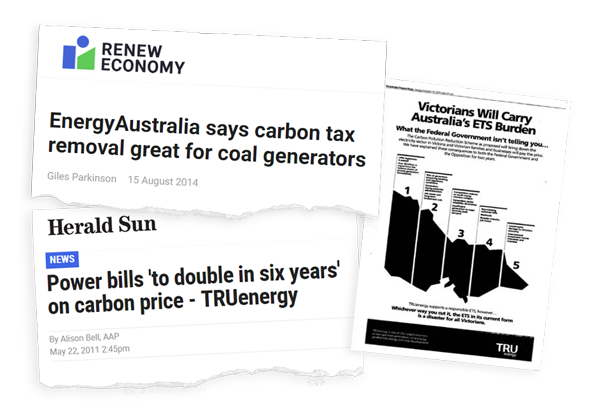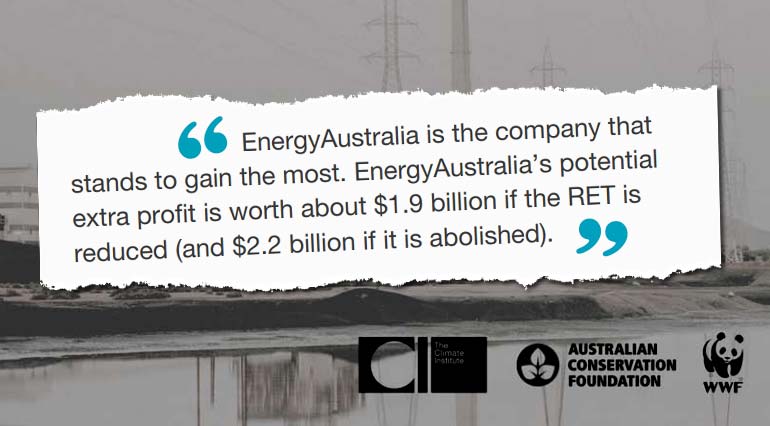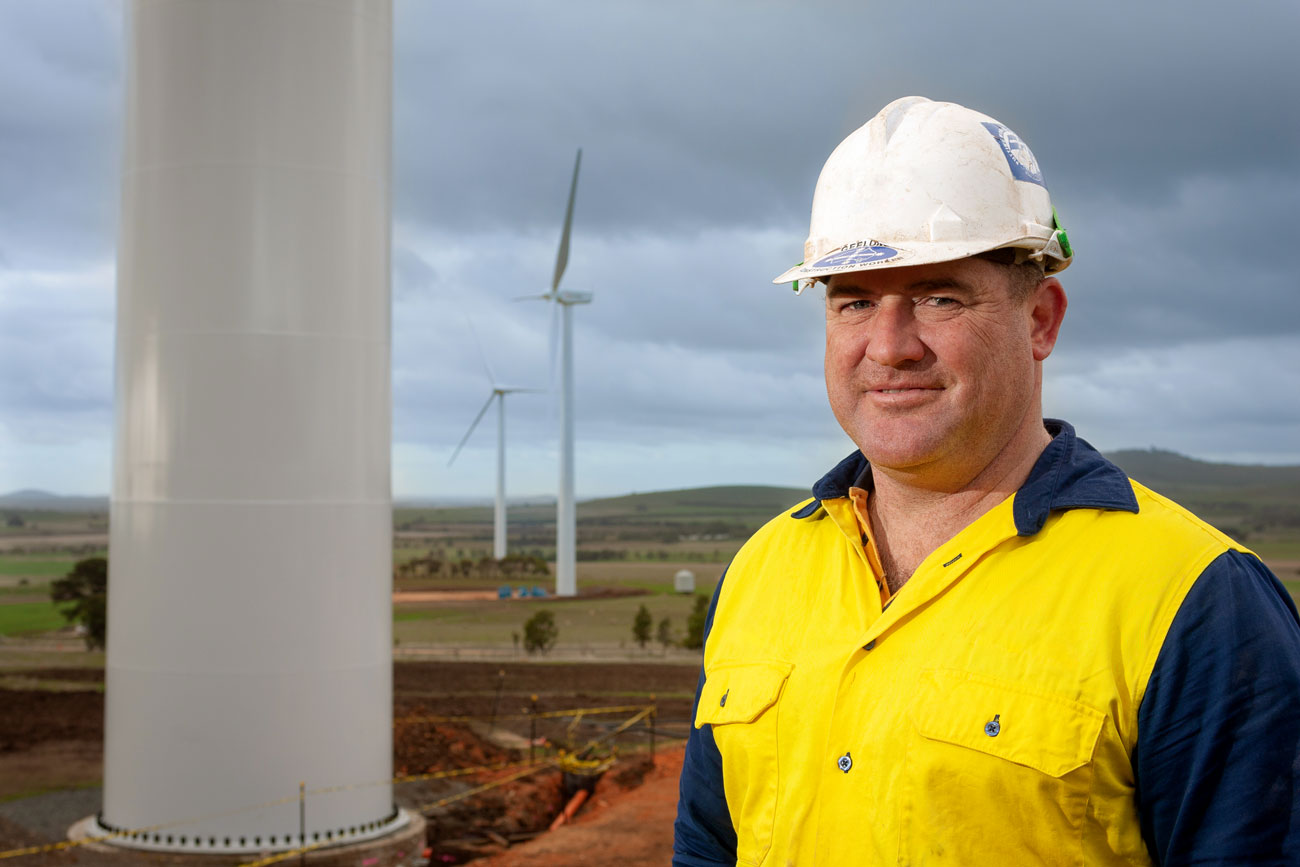Right now the state government is deciding Victoria’s emissions reduction targets for 2025 and 2030.[1] It’s the most important decision they’ll make on climate change this term of government, but they’re facing resistance from some powerful vested interests. So it’s time to shine a spotlight on the tactics and strategy of one of the worst offenders, EnergyAustralia.
Victoria’s emissions reduction targets will determine how fast we cut pollution and influence a whole range of other government decisions. We need to take action that meets the scale and urgency of the climate crisis, and strong targets are crucial.[2]
However EnergyAustralia is up to their old tricks, fuelling fear through the media and trying to blame the Victorian government for the inevitable closure of Yallourn[3] which, at more than 45 years old, is Australia’s most polluting and most unreliable coal-burning power station.
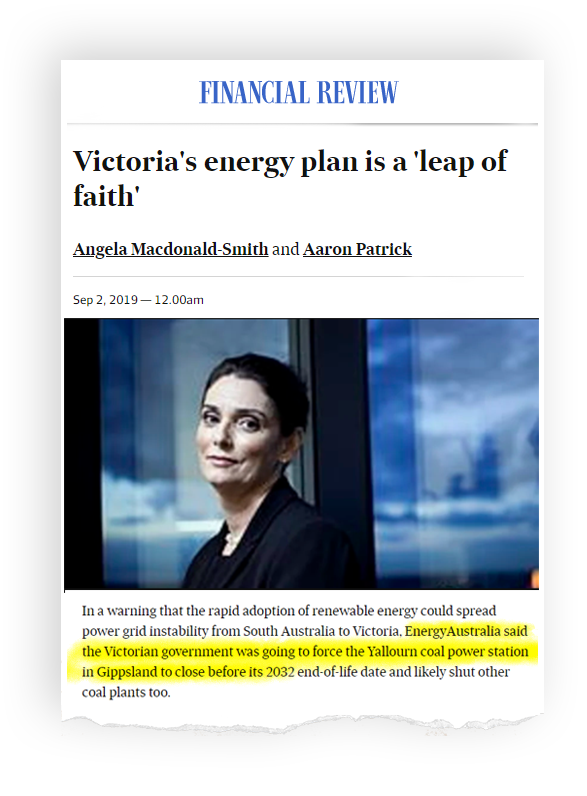
It’s disappointing, but not surprising. As the owners of Yallourn, EnergyAustralia is Australia’s second largest climate polluter, and the power they sell is some of the dirtiest in Australia.[4]
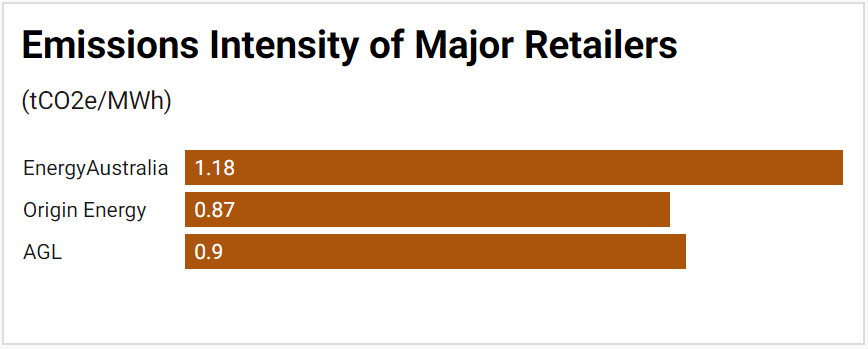
EnergyAustralia sells the most polluting power out of Australia's 'big three' retailers, due mostly to Yallourn.
That’s why, from helping to kill Australia’s carbon price to undermining Australia’s Renewable Energy Target (RET), EnergyAustralia has spent the best part of a decade delaying and weakening policies to cut pollution (see EnergyAustralia’s dirty track record here).
In that time the climate crisis has only grown more urgent, and the impacts more severe.
EnergyAustralia’s strategy = spin and delay
EnergyAustralia likes to pretend they’re taking the middle ground by publicly supporting a transition to clean energy. But they only refer to this transition occurring at some undefined point in the distant future.[5]
This is EnergyAustralia’s desperate attempt to skirt around the issue of the required speed and scale of action, as determined by the science. It’s just a different version of climate denial called ‘predatory delay’.
EnergyAustralia is in total denial about the speed and scale of action we need to address the climate crisis.Click To TweetIn 2018, the UN Intergovernmental Panel on Climate Change (IPCC) warned we have less than 12 years to make rapid changes if we want to limit global temperature rises within a manageable (but still dangerous) range. This involves rapidly phasing out coal-burning power, which numerous studies show needs to happen by 2030.
The reality is EnergyAustralia’s position is anything but reasonable. They have spent years deliberately slowing down climate action so they can profit from business as usual. And they still want to operate Yallourn, Australia’s most polluting and unreliable coal power station, for another 13 years.
That would make Yallourn almost 60 years old! There is simply no level of realistic climate action that fits with this outrageous plan.

 Click to read More …
Click to read More …